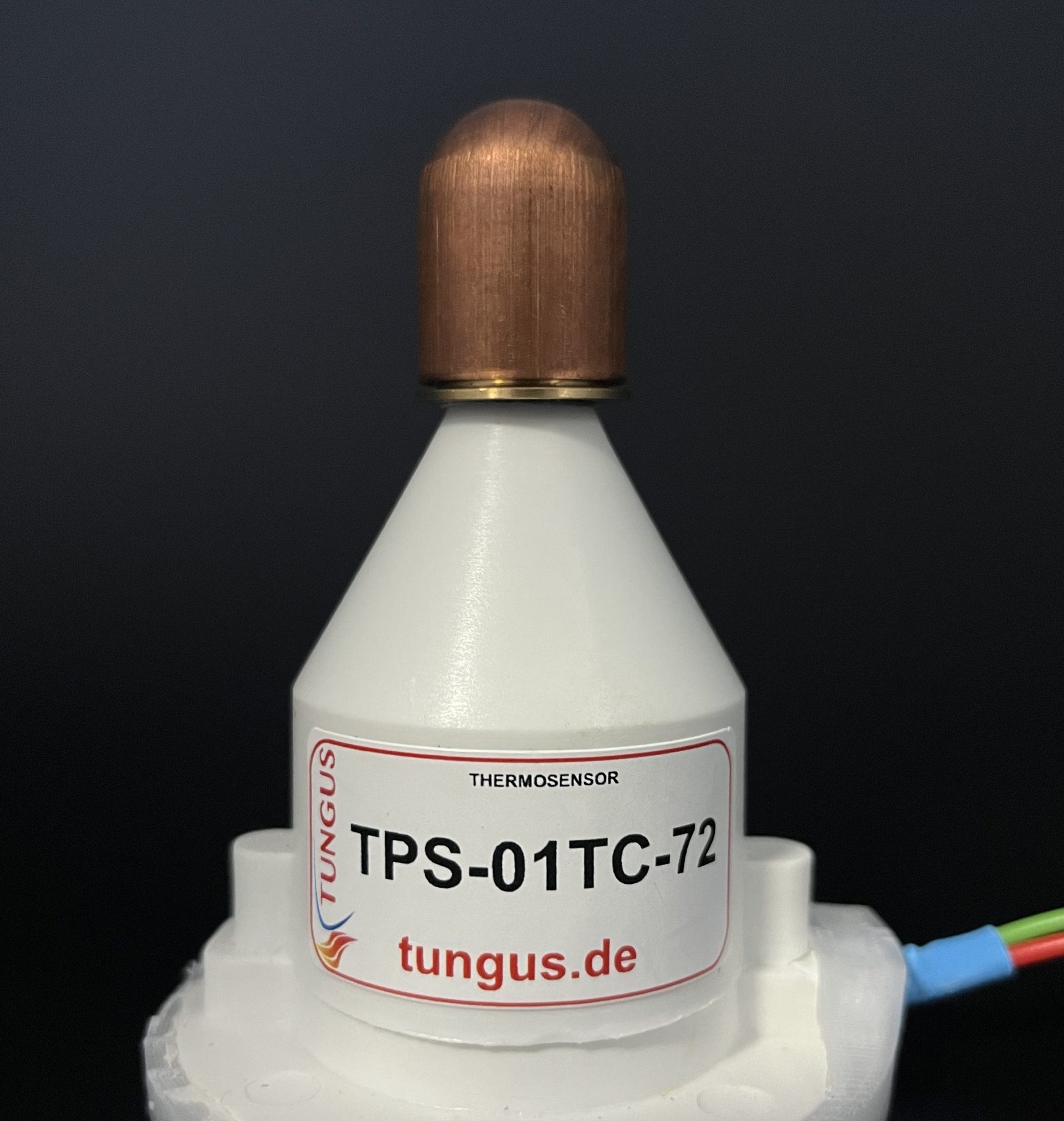With activation temperatures ranging from 72 to 140 °C, TUNGUS sensors offer high flexibility for various applications.
The TUNGUS sensors are self-activating thermo-detection devices that reliably react to the heat of a fire. Thanks to precise thermal sensors, the system only reacts when truly necessary. False alarms and unnecessary activations are virtually eliminated. If a critical temperature is exceeded, our TUNGUS extinguishing modules are activated by an electrical pulse. Targeted extinguishing occurs within seconds.
Since the sensors operate purely mechanically, they can be used completely independently. Sensors with an additional pair of cables can also send a signal to a fire alarm system or other devices, thus informing them of a fire and activating the extinguishing module.
Like all components of the TUNGUS system, the sensors are maintenance-free for at least 12 years. They can also be used as thermal readers.

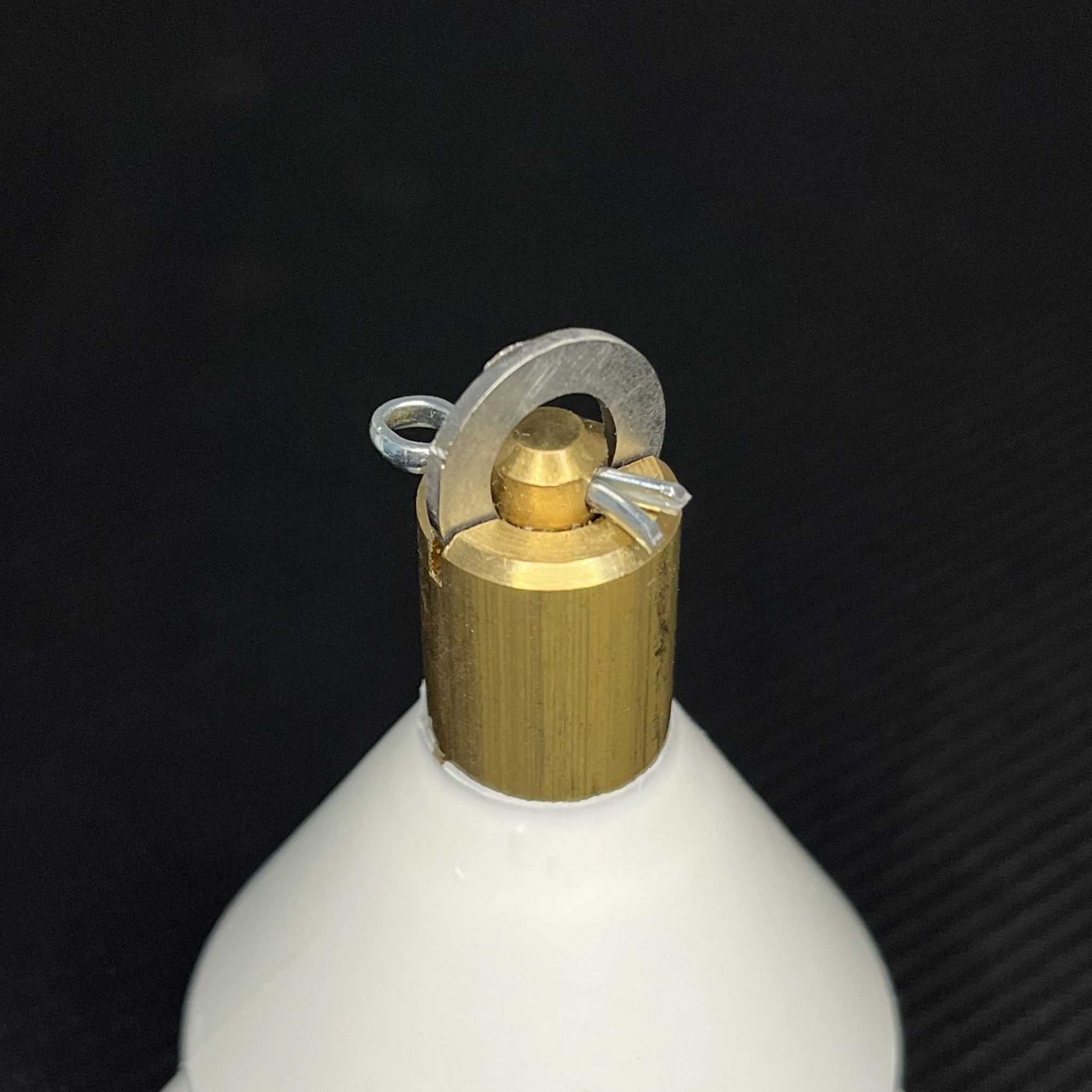
Automatic sensor

Protected automatic sensor
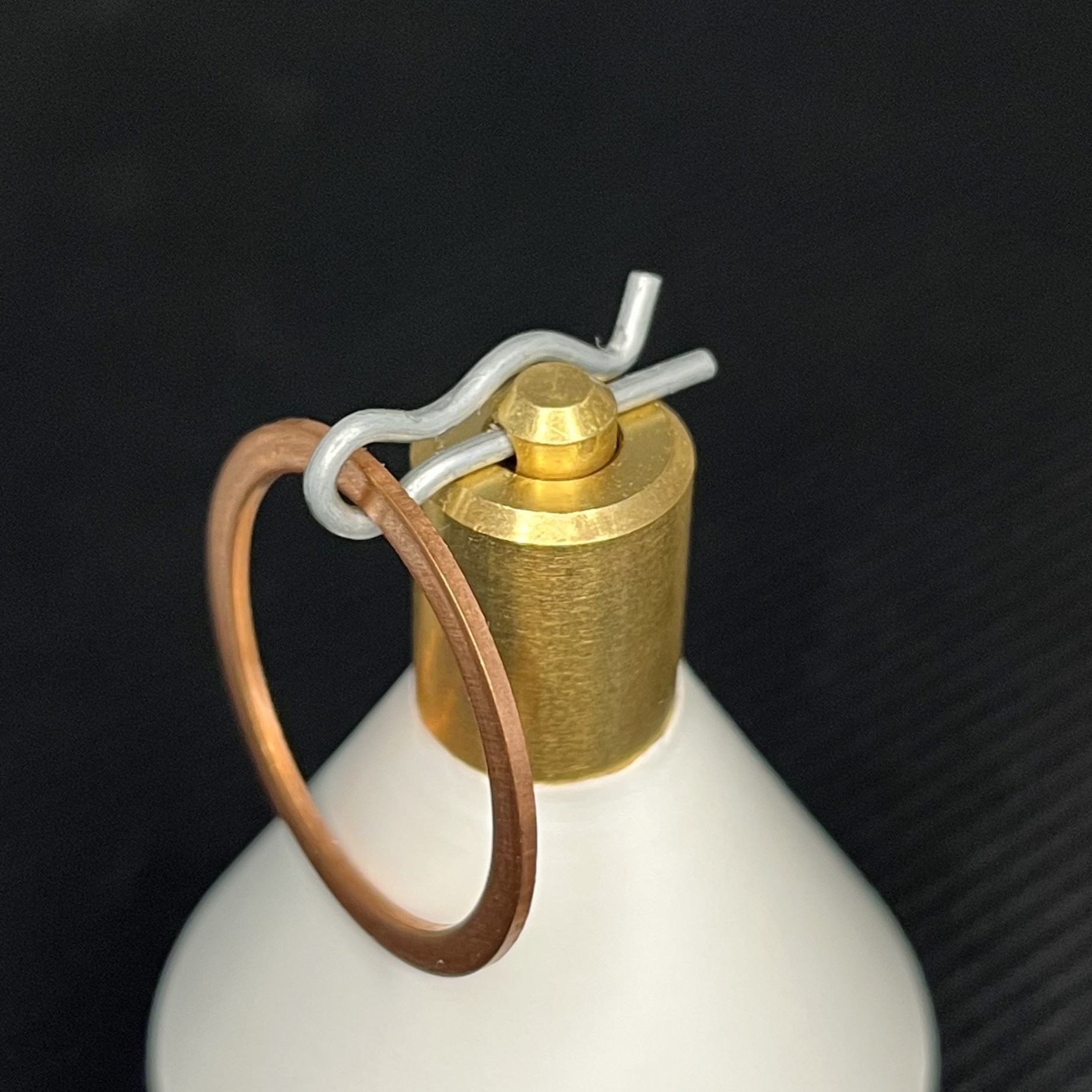
Manual sensor
THE SENSORS
The TUNGUS sensor is available in a variety of versions:
- Sensors for automatic triggering at different temperatures (thermosensor)
- Protected sensors for use in humid and dirty environments
- Manual sensors for additional manual triggering of the modules
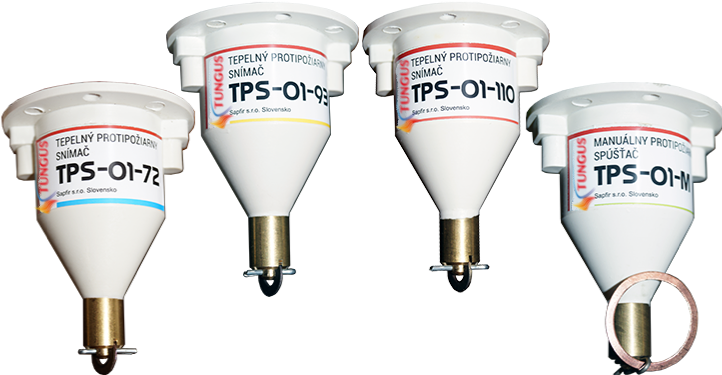

Automatic triggering – How does it work?
The key feature is the bimetallic ring. Once the temperature at the bimetallic ring is reached, it springs out. The metal pin detaches from the sensor head and retracts. The magnet mounted on the pin is pushed backward by the spring through the side coils, generating an electrical pulse that is transmitted to the terminals. The resulting pulse current is transmitted to the corresponding module and is sufficient to activate it.
All automatic models can also be supplied in a specially sealed version with a protective cover for the bimetallic ring, designed for use in harsh environments.
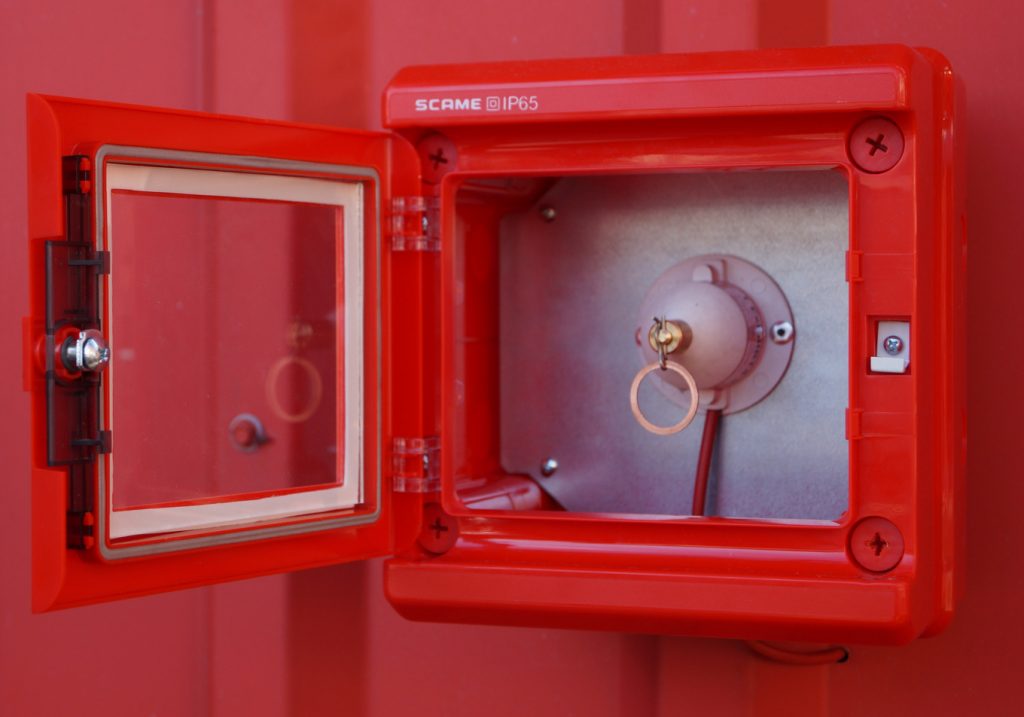
Manual trigger – How does it work?
The manual sensor is not equipped with a bimetallic ring. The sensor’s metal pin is held in its initial position by a locking pin. When this pin is pulled out of its holder using the pull ring, the sensor is activated. The subsequent process for generating the pulse current is identical to that of the automatic trigger sensor. The generated pulse current is transmitted to the corresponding module and is sufficient to activate it.
Like all components of the TUNGUS system, the sensors are ready for use for at least 12 years without maintenance.
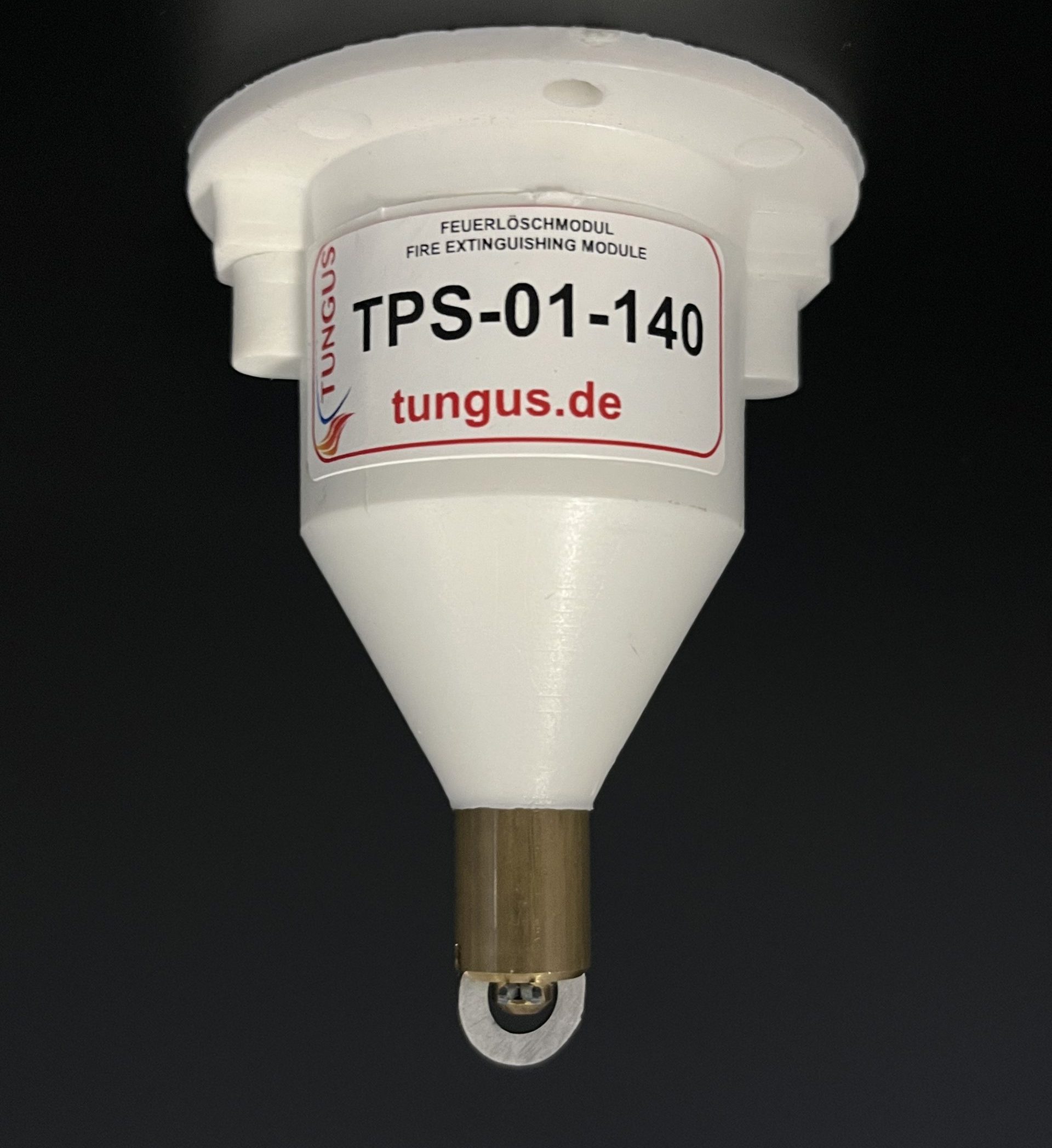
Thermosensor
TUNGUS sensors can be used for four temperature ranges:
- TPS-01-72: Trigger temperature 72°C
- TPS-01-93: Trigger temperature 93°C
- TPS-01-110: Trigger temperature 110°C
- TPS-01-140: Trigger temperature 140°C
In addition to these temperature ranges, different versions of the sensors are available depending on the application.

Versions of the TUNGUS sensors
TPS-01M
This TUNGUS sensor must be manually activated to activate the extinguishing module.

TPS-01C
These sensors are additionally equipped with a second pair of cables for signaling. They can be connected to a fire alarm system or a TUNGUS alarm system.

TPS-01TC
These sensors, designated TC, also feature a copper protective cap for use in particularly dusty environments. Additionally, they can be mounted on a vibration-dampening bracket and are equipped with two pairs of cables.
